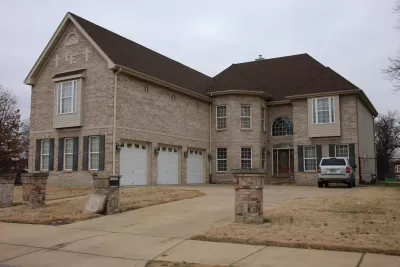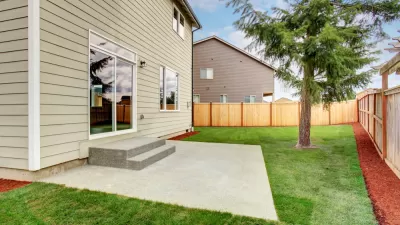McMansion or not, the American home is a good 600 to 800 square feet larger than the average in most other countries. Possible reasons run the gamut from policy to culture to personal economics.

It's no secret that the United States boasts big houses. Average American homes are significantly larger than their global counterparts, and the contrast is even more stark for newer American constructions. Here, Joe Pinsker takes a look at a range of causes for this country's size obsession.
One set of reasons has to do with deliberate policies that "have for the past century effectively steered Americans toward living in detached single-family homes" and commuting by car. Other factors are cultural, like a supposed American preference for space, or historical, like the relative newness of American metros compared to European counterparts built atop medieval foundations.
"In the case of the U.S., more than national wealth is linked to size—there's often a personal financial advantage to it as well," Pinsker writes. Getting a big mortgage on a spacious house, or so the thinking goes, pays off in the long run as the larger house appreciates with time.
Despite the American fixation with space, Pinsker also notes how norms can shift. According to one study, "from 2003 to 2018, the median square footage that home buyers said they wanted dropped from 2,260 to 2,066."
FULL STORY: Why Are American Homes So Big?

Trump Administration Could Effectively End Housing Voucher Program
Federal officials are eyeing major cuts to the Section 8 program that helps millions of low-income households pay rent.

Planetizen Federal Action Tracker
A weekly monitor of how Trump’s orders and actions are impacting planners and planning in America.

Canada vs. Kamala: Whose Liberal Housing Platform Comes Out on Top?
As Canada votes for a new Prime Minister, what can America learn from the leading liberal candidate of its neighbor to the north?

Washington State’s Parking Reform Law Could Unlock ‘Countless’ Acres for New Housing
A law that limits how much parking cities can require for residential amd commercial developments could lead to a construction boom.

Wildlife Rebounds After the Eaton Fire
Following the devastation of the Eaton Fire, the return of wildlife and the regrowth of native plants are offering powerful signs of resilience and renewal.

LA to Replace Inglewood Light Rail Project With Bus Shuttles
LA Metro says the change is in response to community engagement and that the new design will be ready before the 2028 Olympic Games.
Urban Design for Planners 1: Software Tools
This six-course series explores essential urban design concepts using open source software and equips planners with the tools they need to participate fully in the urban design process.
Planning for Universal Design
Learn the tools for implementing Universal Design in planning regulations.
Central Transportation Planning Staff/Boston Region MPO
Heyer Gruel & Associates PA
Institute for Housing and Urban Development Studies (IHS)
City of Grandview
Harvard GSD Executive Education
Regional Transportation Commission of Southern Nevada
Toledo-Lucas County Plan Commissions





























